Land Invertebrates
Media
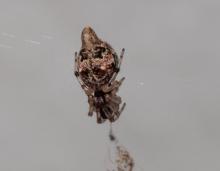
Species Types
Scientific Name
Cyclosa conica and C. turbinata
Description
Trashline orbweavers decorate their small, circular webs with an unimpressive line of insect husks and other debris. The small orbweaver rests at the hub within this line of garbage, looking like just another bit of trash.
Media
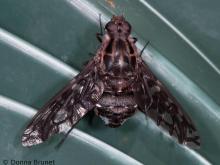
Species Types
Scientific Name
About 800 species in North America
Description
Resembling bees, or sometimes big, fuzzy mosquitoes, bee flies are a family of true flies and are not bees at all. Lacking the ability to sting, their bee mimicry helps them avoid many would-be predators.
Media
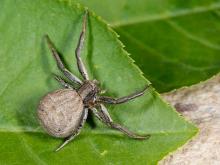
Species Types
Scientific Name
Xysticus spp.
Description
Missouri has several species of ground crab spiders in the genus Xysticus. They are usually dull gray or brown with brown, white, or yellow markings. They typically live under bark or on the ground in leaf litter.
Media
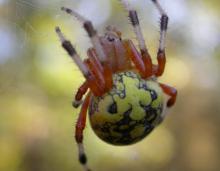
Species Types
Scientific Name
Araneus spp.
Description
Missouri's Araneus spiders, called angulate and roundshouldered orbweavers, can be hard to identify to species. Most have camouflage patterns, and they all make characteristic, delicate, wheel-shaped webs to catch prey.
Media

Species Types
Scientific Name
Neoscona spp.
Description
Missouri's Neoscona spiders, called spotted orbweavers, can be hard to identify to species. Most have camouflage patterns, and they all make the characteristic, delicate, wheel-shaped webs to catch prey.
Media

Species Types
Scientific Name
Various species in the order Pseudoscorpionida
Description
Pseudoscorpions are unusual little arachnids. They look something like tiny scorpions but with a rounded (and nonvenomous) hind end. They're common but often overlooked.
Media
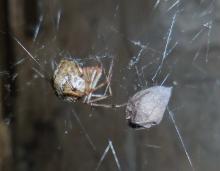
Species Types
Scientific Name
Parasteatoda tepidariorum (syn. Achaeranea tepidariorum)
Description
You probably have at least a few common house spiders in your garage. Take heart: they are harmless and they eat many pest insects.
Media
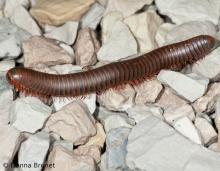
Species Types
Scientific Name
More than 900 species in North America north of Mexico
Description
Millipedes, which have two pairs of legs per body segment, are harmless detritus-eaters, move slowly, and curl up defensively when harassed.
Media
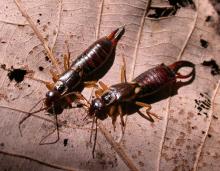
Species Types
Scientific Name
Forficula auricularia, Euborellia anulipes, and others.
Description
Earwigs have smooth, slender, flattened bodies that are perfect for living under rocks, leaves, and tree bark. Their pincers can repel insect predators, but they are harmless to people.
Media

Species Types
Scientific Name
Diapheromera femorata, Megaphasma denticrus, and others
Description
Walkingsticks are long, slender insects that are perfectly camouflaged to look like brown or green twigs. Most species are tropical, but some types are found in Missouri.
See Also


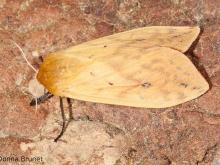
Media

Species Types
Scientific Name
Cisseps fulvicollis
Description
The yellow-collared scape moth is more often “orange-collared.” And whether you think it looks more like a firefly or a wasp, it’s still a moth!
Media

Species Types
Scientific Name
Nearly 150 species in North America north of Mexico
Description
Slim, delicate plume moths are instantly recognizable by their T-shaped silhouette, long legs, and muted shades of tan and brown. It can be hard to separate the various species.
Media

Species Types
Scientific Name
Pyrrharctia isabella
Description
Not many people know the adult Isabella tiger moth when they see one, but we’re all acquainted with its caterpillar, the woolly worm, or woolly bear.
About Land Invertebrates in Missouri
Invertebrates are animals without backbones, including earthworms, slugs, snails, and arthropods. Arthropods—invertebrates with “jointed legs” — are a group of invertebrates that includes crayfish, shrimp, millipedes, centipedes, mites, spiders, and insects. There may be as many as 10 million species of insects alive on earth today, and they probably constitute more than 90 percent all animal species.





















